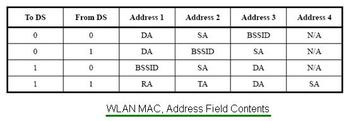WLAN Physical Layer: 802.11 PHY Explained
Advertisement
This article delves into the WLAN (Wireless Local Area Network) physical layer, specifically focusing on the IEEE 802.11 WLAN PHY. We’ll explore the transmitter and receiver block diagrams. To understand the physical layer thoroughly, we will examine the WLAN frame structure, OFDM (Orthogonal Frequency Division Multiplexing) symbol structure, modulation code rate table, and the functions of WLAN transmitter and receiver modules.
Introduction to 802.11
This section describes the 802.11 physical layer as defined in the IEEE 802.11a-1999 standard. The 802.11a standard operates at the 2.4GHz RF frequency and supports data rates up to 54Mbps.
Several other popular standards exist within the 802.11 family, including 802.11b, 802.11g, and 802.11n. 802.11b operates at 2.4GHz, offering data rates up to 11 Mbps, utilizing DSSS (Direct Sequence Spread Spectrum) and CCK (Complementary Code Keying) modulation schemes. 802.11g operates at 5GHz and is compatible with both 802.11a and 802.11b standards.
WLAN 802.11 Frame Structure
The WLAN frame structure primarily consists of the PLCP (Physical Layer Convergence Protocol) Preamble, the Signal (Header) part, and the Data Part. The PLCP preamble field includes 10 repetitions of a “short training sequence” and two repetitions of a “long training sequence,” preceded by a guard interval (GI). The Header part comprises 24 bits and is always BPSK (Binary Phase Shift Keying) modulated. This header contains information about the Rate (modulation-code rate) and Length (in units of OFDM symbols) of the Data part.
In WLAN, one symbol uses a 64-point FFT (Fast Fourier Transform). It consists of 48 data carriers, 4 pilot carriers, 1 DC (Direct Current) carrier, and the remaining carriers are used as guard carriers.
The 802.11a standard defines a modulation-code rate table, as shown below, which dictates physical layer configuration based on the desired data rate.

Table-1: Different data rates supported by the WLAN (i.e., WiFi) standard.

Table-2: Parameters of the 802.11 WLAN OFDM symbol.
The transmitter encoding process for the 802.11 physical layer is depicted in the block diagram below. For instance, if a data rate of 18 Mbps is selected, the modulation is set to QPSK (Quadrature Phase Shift Keying), the coding rate is set to 3/4, the coded bits per carrier are set to 2, and the coded bits per OFDM symbol are set to 96. In this case, the Data bits per OFDM symbol will be 72.
WLAN Physical Layer as per 802.11 standard
Let’s examine the WLAN physical layer block diagram, diving into these subsections:
- WLAN Preamble generation and data generation
- WLAN header generation
- WLAN packet formation
WLAN Preamble and Data Generation
- Preamble Generation: The preamble consists of the short training field (STF) and the long training field (LTF).
- Header Generation:
- Generating the SIGNAL field bits.
- Coding and interleaving the SIGNAL field bits.
- Mapping the SIGNAL field into the frequency domain.
- Pilot and Guard insertion.
- Transforming into the time domain.
- Data Generation: If the message to be transmitted is not already in bits, it is converted to ASCII format. Then, an appropriate MAC header is prepended, and a CRC32 checksum is added. Based on the message length and the modulation-code rate, the required number of OFDM symbols is calculated. The DATA for each symbol is generated as follows:
- Represent data in octets as bits.
- Prepend the SERVICE field and add pad bits, forming the DATA.
- Scramble and zero the tail bits.
- Encode the DATA with a convolution encoder and puncturing.
- Map the data into complex 16-QAM (Quadrature Amplitude Modulation) symbols.
- Pilot and Guard insertion.
- Transform from frequency to time and add a cyclic prefix.
WLAN packet formation as per 802.11 wifi standard
- Packet Formation: The preamble, header, and data symbols are combined in the correct order to form the complete packet ready for transmission.
The complete process for a 100-octet message at a data rate of 36 Mbit/s is detailed in Annex G of the IEEE 892.11a-1999 standard.

The receiver reverses the processes of the transmitter, incorporating front-end synchronization modules for time offset, frequency offset, and channel impairment correction. This is typically achieved using the preamble pattern. Following this, the header is decoded as the modulation-code rate is known (BPSK 1/2). Based on the rate and length information in the header, the data is decoded and passed to the MAC layer for further processing.

Advertisement
 RF
RF







